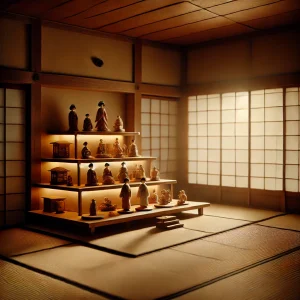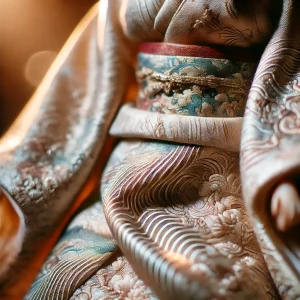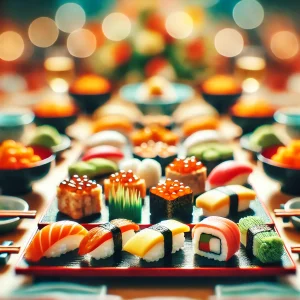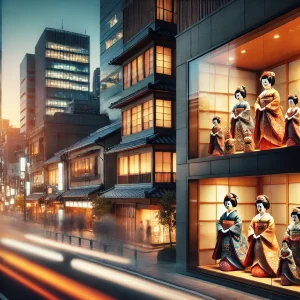Introduction to Hinamatsuri

Have you ever wondered what makes March 3rd so special in Japan? Well, it's the day when families across the country celebrate Hinamatsuri, also known as the Doll Festival. This charming festival, rooted deeply in Japanese tradition, is all about wishing for the health and happiness of young girls. On this day, households display a set of beautifully crafted dolls dressed in traditional Heian-era clothing, symbolizing the Emperor, Empress, and their court. These dolls aren’t just decorative; they carry significant cultural meaning, representing the hope for a bright future for the girls in the family.
The origins of Hinamatsuri go way back, and the festival has evolved over centuries. Initially, it was part of a purification ritual where people believed that their misfortunes could be transferred to the dolls and then sent away. Over time, this tradition turned into the doll festival we know today, full of joy, colors, and a deep sense of cultural pride. What’s fascinating is how this festival perfectly blends ancient customs with modern celebrations, making it a unique cultural event that continues to thrive in Japan.
So, why March 3rd? This date isn’t just randomly chosen. It’s known as "Momo no Sekku," one of the five seasonal festivals in Japan, and it’s when the peach blossoms start to bloom, symbolizing beauty and renewal. The festival coincides with the arrival of spring, a time when everything in nature begins anew, and so do the hopes for the young girls who are celebrated on this day.
Historical Background of Hinamatsuri

Let’s dive into the fascinating history of Hinamatsuri, shall we? You might be curious about how this charming Doll Festival began and how it transformed into the beloved celebration it is today. Well, the roots of Hinamatsuri are ancient, stretching back to the Heian period in Japan, which is over a thousand years ago. Back then, the festival was part of a ritual called "hina-nagashi," where people believed they could transfer their misfortunes and bad luck to paper dolls and then float them away down a river, effectively cleansing themselves of any impending troubles. Sounds intriguing, right?
As time went on, these rituals evolved. By the Edo period, which lasted from the 17th to the 19th century, the custom of displaying hina dolls began to take shape. But these weren’t just any dolls—they were intricately crafted representations of the Emperor, Empress, and their court, all dressed in the elaborate attire of the Heian aristocracy. Families would carefully set up these dolls on a tiered platform, with each level representing different ranks in the court. The dolls became a symbol of good fortune and were believed to protect young girls from harm, ensuring their well-being and happiness as they grew up.
Now, what’s truly interesting is how the traditions around Hinamatsuri have continued to adapt over the years. While the core elements remain, like the display of the hina dolls, modern celebrations have added new layers to the festival. For example, today, it’s common for families to host special gatherings where they enjoy traditional foods like chirashizushi and hishi-mochi, all while admiring the beautiful doll displays. The festival has also found a place in schools and communities, where events are organized to teach children about the cultural heritage of Japan.
So, from its origins as a simple purification ritual to its current form as a vibrant cultural celebration, Hinamatsuri has certainly come a long way. It’s a wonderful example of how traditions can grow and change while still preserving the essence of their beginnings.
Significance of Hinamatsuri Dolls

Let’s talk about the heart of Hinamatsuri—the dolls. You’ve probably seen those beautiful, elaborately dressed dolls on tiered platforms, right? But have you ever wondered why these dolls are so significant or what each one represents? Well, there’s more to these dolls than meets the eye!
First off, the main stars of the show are the Emperor and Empress, known as "Odairi-sama" and "Ohina-sama." These two are always placed at the top of the platform, symbolizing the highest authority and a harmonious marriage. Their attire is designed to reflect the splendor of the Heian period, with the Empress donning an intricate kimono and the Emperor in his regal robes. But it’s not just about their appearance—these dolls embody the wish for the health, happiness, and prosperity of young girls, especially in their future marriages.
Now, moving down the platform, you’ll find three ladies-in-waiting, known as "Sannin Kanjo." These dolls are positioned just below the Emperor and Empress and are often depicted holding sake equipment. Their role is to attend to the Imperial couple, and they symbolize elegance and the refined manners expected in a noble household.
Below them, you’ll notice five musicians, "Gonin Bayashi," who are usually portrayed playing traditional Japanese instruments like the taiko drum and the flute. They add a lively touch to the display and represent the festive atmosphere of the court, bringing joy and entertainment to the celebration.
Further down, you might spot two ministers, "Udaijin" and "Sadaijin," who serve as the right and left ministers, respectively. These figures represent the wise and loyal officials who protect the Emperor and Empress, standing as symbols of guidance and security. Their presence in the doll set reflects the importance of having wise counselors and protectors in life.
And finally, at the bottom, you’ll often find three servants or "Shicho," each holding various tools like a broom, a dustpan, and a rake. These dolls symbolize the everyday helpers in the court, representing the idea that no task is too small and that every role is important in maintaining harmony in the household.
Each of these dolls plays a vital part in the overall display, creating a miniature world that reflects the ideals of the Japanese court. It’s not just about decoration—it’s about bringing to life a tradition that honors family, prosperity, and the well-being of young girls as they step into their futures. So, next time you see a Hinamatsuri display, take a moment to appreciate the rich symbolism behind each doll and what they represent in this cherished festival.
Traditional Celebrations and Practices

Let’s explore how families celebrate Hinamatsuri today, shall we? If you’ve ever been in Japan on March 3rd, you might have noticed beautiful displays of dolls and a sense of festivity in the air. Hinamatsuri, or the Doll Festival, is a special day when families, especially those with daughters, come together to wish for their girls’ health, happiness, and successful futures. But what does a typical Hinamatsuri celebration look like?
First off, the centerpiece of the celebration is, of course, the hina doll display. Families often set up these tiered platforms in their homes weeks before March 3rd, carefully arranging the dolls in their designated spots. It’s a delicate process, almost like an art form, with each doll representing a specific role in the Imperial court. The dolls are usually displayed in the best room of the house, where they can be admired by family members and guests alike.
But Hinamatsuri isn’t just about admiring the dolls—it’s also a time for gathering and enjoying traditional foods that are closely tied to the festival. One of the most popular dishes is "chirashizushi," a colorful sushi dish made with vinegared rice topped with fresh seafood, vegetables, and sometimes even a sprinkle of bright yellow scrambled eggs. It’s not only delicious but also visually appealing, fitting the festive mood of Hinamatsuri perfectly.
Another treat you’ll find on this day is "hishi-mochi," a diamond-shaped rice cake layered with three colors—pink, white, and green. Each color has its own meaning: pink for chasing away evil spirits, white for purity, and green for health. These rice cakes are not only eaten but are also placed on the hina doll display as an offering, symbolizing the family’s prayers for their daughters’ well-being.
Speaking of sweets, "hina-arare," small colorful rice crackers, are another must-have for the festival. These crackers, which come in various pastel colors, are often shared among family members and friends, adding a sweet touch to the day’s celebrations. They’re not just tasty—they’re also believed to bring good luck and happiness.
As for customs, one of the more unique aspects of Hinamatsuri is the tradition of taking down the doll display immediately after the festival. There’s a superstition that if the dolls are left out too long after March 3rd, it could delay the marriage of the family’s daughters. So, families are careful to put the dolls away promptly, ensuring that their daughters will have good fortune in the future.
Overall, Hinamatsuri is a day filled with joy, tradition, and family togetherness. It’s a beautiful way for families to honor their daughters and to pass down cultural traditions from one generation to the next, all while enjoying some delicious food and the company of loved ones.
Hinamatsuri in Modern Japan

